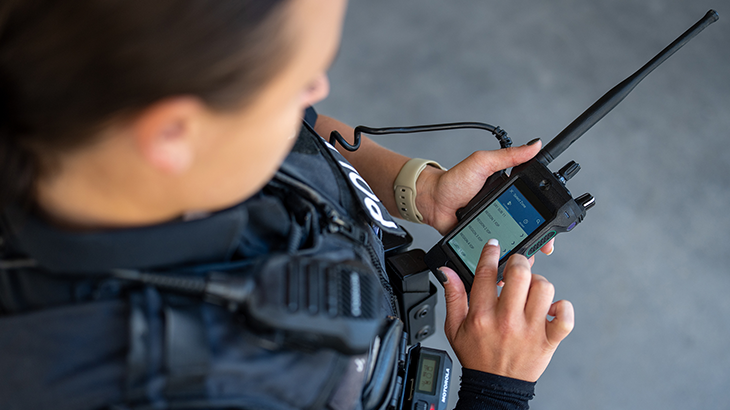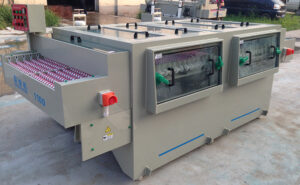
In today’s fast-paced industries — whether utilities, construction, logistics, oil and gas, public safety, or environmental services — field teams operate in some of the most demanding and dynamic environments. These workers often perform mission-critical tasks across large territories and remote locations where reliable communication is non-negotiable.
That’s why reliable two-way radios for field teams remain one of the most trusted and indispensable tools for modern field operations. In this article, we’ll explore why dependable two-way radios are essential for field teams, the key features to look for, and how businesses can design radio systems that empower their mobile workforce to operate safely, efficiently, and effectively.
Why Field Teams Need Reliable Communication
Field work presents a unique set of communication challenges:
- Geographic dispersion: Teams operate across vast regions — remote highways, rural zones, industrial sites, or urban centers.
- Hazardous conditions: Many field environments involve potential safety risks, including weather extremes, heavy equipment, hazardous materials, and live utilities.
- Constant mobility: Crews are constantly moving between job sites and facilities, often in areas with poor cellular coverage.
- Noise & interference: Construction zones, engine compartments, and industrial settings produce high background noise.
- Emergency readiness: Quick, clear, and reliable communication is vital to ensure fast response during accidents or hazardous situations.
Reliable two-way radios for field teams meet all these challenges head-on, offering instant push-to-talk (PTT) communication, rugged durability, and extended coverage where smartphones and conventional networks fall short.
How Reliable Radios Enhance Field Safety
Safety is the top priority for any field-based workforce. Radios play a critical role in protecting workers and reducing risk:
1. Instant Emergency Alerts
If an incident occurs — a fall, equipment failure, fire, or injury — workers can press an emergency button or trigger a man-down alert that instantly notifies dispatch and supervisors.
2. Lone Worker Monitoring
Radio check-in features and GPS tracking allow supervisors to monitor lone workers in the field, ensuring timely assistance if needed.
3. Worksite Coordination
Crews performing complex tasks, such as power line repairs or excavation, can coordinate actions in real time to avoid dangerous errors.
4. Weather & Hazard Warnings
Control centers can broadcast weather alerts, evacuation orders, or safety advisories instantly to all field teams.
5. Hazard Zone Communication
Radios enable communication across confined spaces, underground environments, or remote zones where cellular coverage is unreliable or nonexistent.
Boosting Productivity and Efficiency
In addition to safety, reliable two-way radios for field teams drive significant productivity gains:
1. Real-Time Dispatch & Task Management
Supervisors and dispatchers can instantly assign tasks, reroute crews, and coordinate multi-team responses via radio — no waiting for phone calls or emails.
2. Fleet & Asset Coordination
Field teams use radios to coordinate vehicle movements, equipment use, and supply delivery across job sites.
3. Faster Decision-Making
Real-time voice communication empowers crews to resolve issues faster, reducing downtime and service interruptions.
4. Team Collaboration
Field workers can easily communicate with colleagues and leadership — even across large work zones or dispersed locations.
5. Reduced Communication Costs
Unlike cell phones, radios operate on dedicated frequencies with no per-minute charges or data overages — saving money while enhancing reliability.
Key Features to Look for in Field Radios
When selecting reliable two-way radios for field teams, prioritize these essential features:
1. Rugged Design
Field radios must withstand:
- Dust and debris
- Water exposure (look for IP67 or IP68 ratings)
- Drops and impacts
- Temperature extremes
- Vibration and heavy handling
2. Loud, Clear Audio
High-powered speakers and noise-cancelling microphones are crucial for maintaining communication in noisy field environments.
3. Extended Battery Life
Choose radios with 12–16+ hours of battery life to support long shifts in the field.
4. Emergency & Safety Features
Look for:
- Emergency panic buttons
- Lone worker monitoring
- Man-down detection
- GPS location tracking
- Text messaging for discreet communication
5. Flexible Coverage
- Trunked radio systems provide seamless wide-area coverage.
- Repeaters and distributed antennas can extend coverage to remote or hard-to-reach areas.
6. Encryption & Privacy
Digital radios with AES or proprietary encryption keep sensitive communications secure.
7. Hands-Free Operation
Headsets, remote microphones, and Bluetooth accessories enable safe, hands-free operation for workers handling tools or operating vehicles.
Common Use Cases Across Industries
Reliable two-way radios for field teams are used in many sectors:
- Utilities: Electric line workers, gas crews, water service teams
- Construction: Supervisors, equipment operators, safety officers
- Logistics & Transport: Drivers, dock workers, yard crews
- Oil & Gas: Wellsite teams, pipeline inspectors, rig workers
- Public Safety: Search and rescue teams, emergency management personnel
- Environmental Services: Surveyors, remediation crews, field scientists
- Telecommunications: Tower climbers, fiber installation teams, network technicians
In each of these use cases, radios provide the fast, reliable, and secure communication that field teams need to operate safely and efficiently.
Selecting the Right Radio System
When designing a system for your field workforce, consider these factors:
1. Analog vs. Digital
Digital radios (DMR, NXDN, P25) offer superior audio clarity, encryption, and features compared to analog systems.
2. Frequency Band Selection
- UHF: Best for urban and dense environments.
- VHF: Ideal for long-range rural and outdoor coverage.
3. Network Architecture
Trunked radio systems provide scalable wide-area coverage — critical for large fleets and mobile workforces.
4. Licensing & Compliance
Most commercial-grade radios require FCC licensing. Work with an experienced integrator to manage licensing and ensure regulatory compliance.
5. Resiliency & Redundancy
Design your network with redundant sites, backup power, and fault-tolerant backhaul to ensure uptime even during disasters.
Best Practices for Field Radio Deployment
To get the most value from reliable two-way radios for field teams, follow these best practices:
- Conduct professional coverage testing across your field territories.
- Segment crews into logical talk groups to avoid channel congestion.
- Train workers on proper radio use, emergency protocols, and radio etiquette.
- Establish and enforce clear standard operating procedures (SOPs) for radio communication.
- Monitor system performance and perform regular maintenance and updates.
- Integrate radios with GPS tracking and dispatch systems for enhanced field visibility and control.
Conclusion
In industries where workers operate in the field — often in remote, hazardous, and unpredictable conditions — reliable two-way radios for field teams are an essential investment.
By providing fast, clear, and resilient communication, these systems enhance worker safety, drive productivity, and ensure seamless coordination between field crews and command centers.
If your business depends on field-based operations, now is the time to review your communication tools and consider upgrading to a robust radio system that meets your evolving needs. The right solution will keep your workforce connected, protected, and empowered — no matter where the job takes them.
FAQs
- Are radios better than smartphones for field communication?
Yes. Radios provide instant push-to-talk communication, work in areas with poor cell coverage, and offer superior durability for field conditions. - Can radios provide GPS tracking for field teams?
Yes. Many modern digital radios support GPS tracking, allowing dispatchers to monitor vehicle and personnel locations in real time. - Are radios secure for sensitive field operations?
Digital radios with proper encryption provide secure and private communication for critical field operations. - How far can field radios communicate?
With proper network design — including repeaters and trunked systems — radios can provide coverage across entire service territories and regions. - How long do field radios last?
High-quality field radios can operate reliably for 5–10+ years with regular maintenance and battery management.





